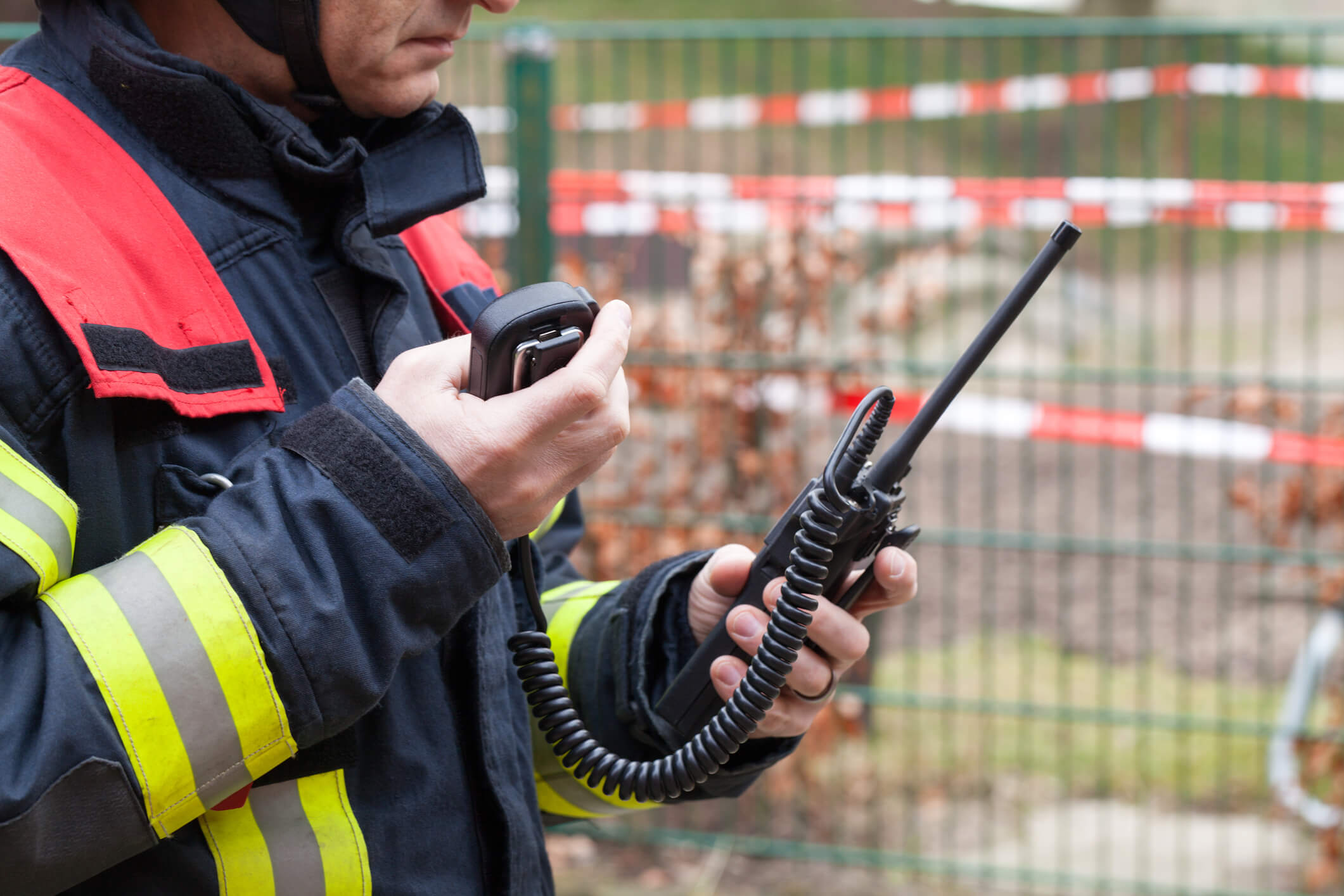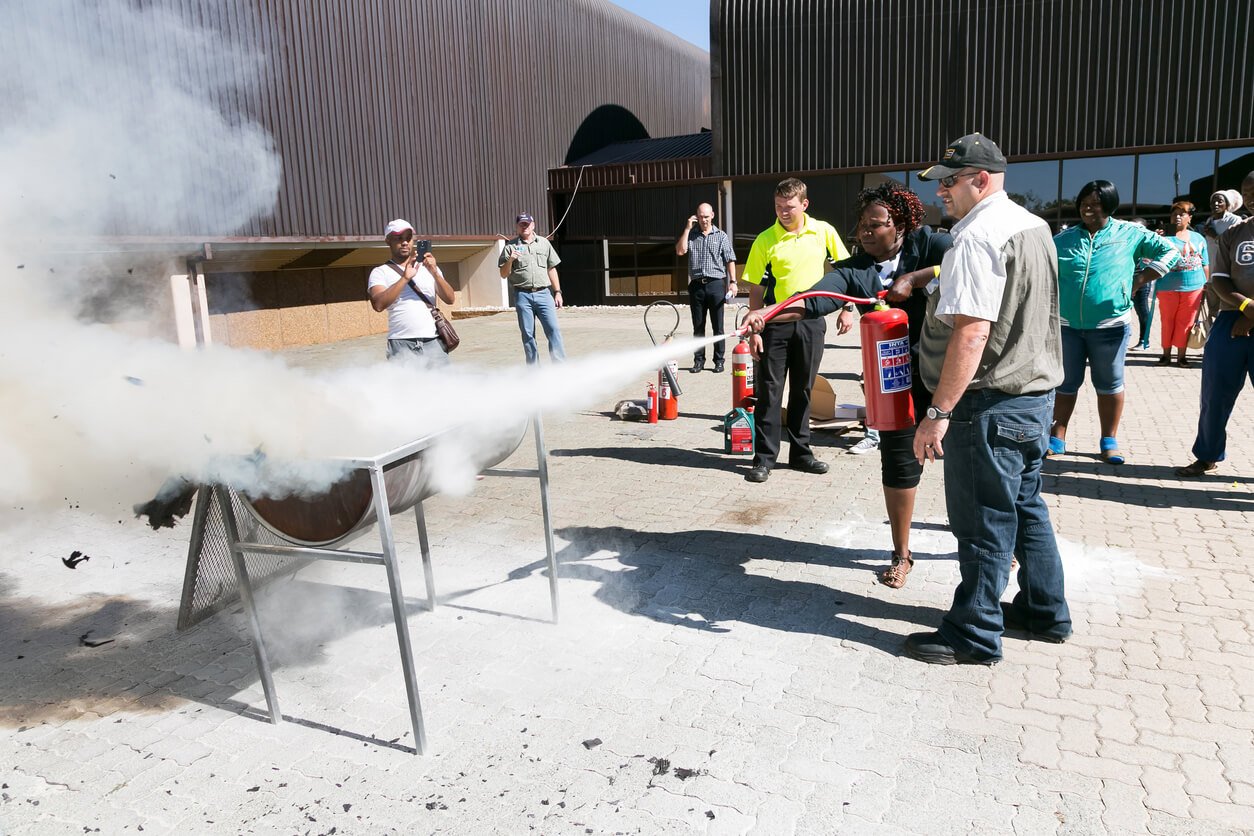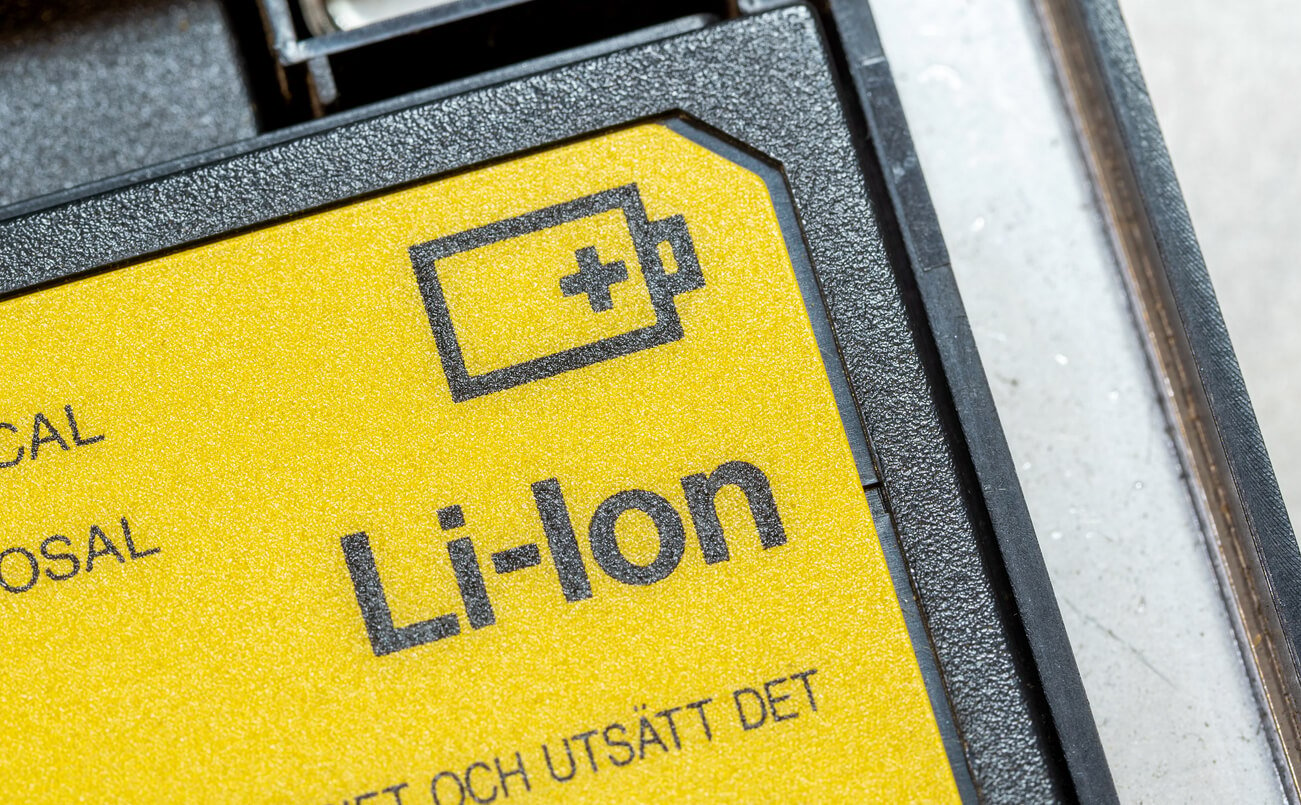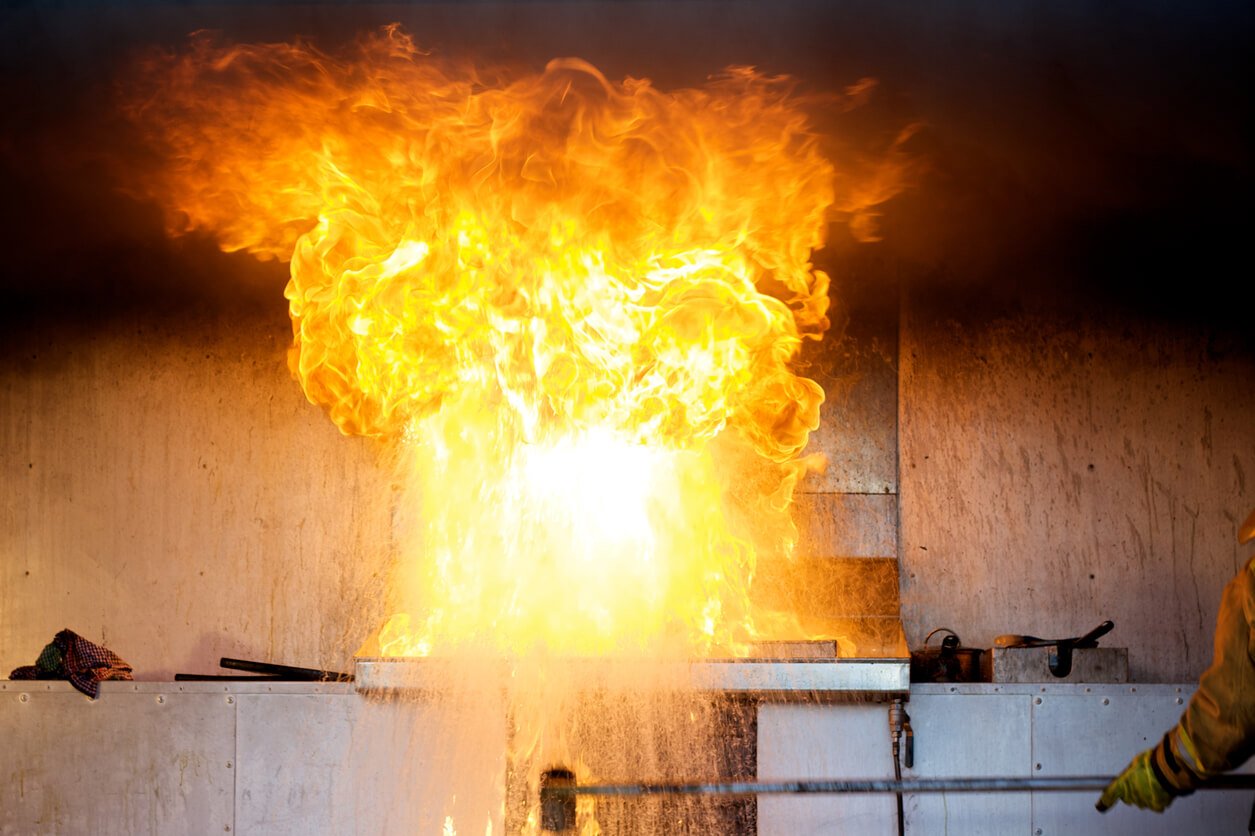What Is a Distributed Antenna System (DAS)?
A distributed antenna system (DAS) is a network of strategically placed antennas connected by coaxial cable that extends wireless coverage throughout buildings and large structures.
DAS systems solve signal interference problems by bringing wireless networks directly into areas where coverage would naturally be weak or nonexistent, ensuring reliable radio communications for emergency responders in critical areas like stairwells, basements, and other challenging environments.
On September 11, 2001, the collapse of the World Trade Center exposed a critical flaw in emergency response infrastructure.
First responders struggled to communicate with each other inside the buildings, with radio signals failing to penetrate the massive concrete and steel structures. This tragedy highlighted a fundamental problem that continues to affect emergency responders today: modern building materials create dead zones where radio communications simply cannot reach.
The solution lies in understanding how wireless signals interact with today's construction materials. Concrete walls, steel reinforcements, and low-emissivity glass windows all act as barriers to radio frequencies, blocking the very communications that emergency responders rely on to save lives.
This is where distributed antenna systems become essential for public safety, ensuring reliable connectivity throughout even the most challenging building environments.
Key Takeaways
- Conduct comprehensive coverage testing to identify dead zones in your building, then design DAS solutions to eliminate these dangerous communication gaps
- Meet NFPA 72 and NFPA 70 requirements by ensuring 99% radio coverage in critical areas like stairwells and basements, plus 90% coverage in general areas, with regular testing to verify compliance with authority having jurisdiction standards
- Choose active DAS systems for large structures that use bi-directional amplifiers and coaxial cable networks to boost RF signals and provide reliable connectivity throughout challenging building environments where passive systems may not be sufficient
- Integrate with existing cellular infrastructure when possible to create cost-effective public safety DAS solutions that maintain dedicated emergency responder frequencies while leveraging current commercial wireless systems already in place
- Schedule annual inspections with certified technicians to test signal strength, verify equipment functionality, and ensure your distributed antenna system continues to provide the reliable radio coverage that emergency responders depend on
What Is a Distributed Antenna System (DAS)?
A distributed antenna system is a network of strategically placed antennas connected by coaxial cable that extends wireless coverage throughout buildings and large structures. Think of it as creating a wireless communication highway that reaches every floor, stairwell, and basement where traditional radio signals would otherwise fail.
DAS systems solve the fundamental problem of signal interference by bringing the wireless network directly into areas where coverage would naturally be weak or nonexistent.
The core components work together to create seamless radio coverage across entire buildings. Unlike a single antenna that broadcasts from one central location, a DAS network distributes multiple connection points throughout a structure, ensuring consistent signal strength in critical areas where emergency responders need reliable communication most.
How DAS Solutions Work
The technology behind distributed antenna systems involves three key components that work together to extend emergency responder radio coverage throughout large venues and commercial buildings.
- Antennas: Multiple small antennas are positioned strategically throughout the building to provide localized coverage in specific zones, ensuring no area remains a dead zone for radio communications.
- Coaxial Cable: High-quality coaxial cable connects all system components, carrying radio frequency signals from the main equipment room to antennas positioned throughout the structure.
- Bi-Directional Amplifiers: These devices boost both incoming and outgoing RF signals, ensuring strong signal strength in both directions for reliable two-way communication between emergency responders and dispatch centers.
This network approach provides several advantages over traditional single antenna systems. While a single antenna might provide adequate coverage in open outdoor spaces, it cannot penetrate the concrete, steel, and specialized glass materials commonly used in modern commercial construction.
Active vs Passive DAS
An active DAS uses powered amplifiers to boost signals and extend coverage, while passive systems rely on antennas and cables without additional amplification. Active systems generally provide more reliable coverage in larger structures, though passive systems can be effective in smaller buildings with fewer interference challenges.
The result is comprehensive wireless communication that reaches every critical area where first responders might need to coordinate emergency response efforts.
The Relationship Between Public Safety DAS and Commercial Wireless Systems
Public safety distributed antenna systems operate on dedicated frequencies specifically reserved for emergency responders, ensuring priority access during critical situations when seconds matter most.
These dedicated channels mean that police, firefighters, and emergency medical personnel never have to compete with general public wireless traffic for network access. Commercial cellular DAS systems, while valuable for general connectivity, cannot guarantee the same level of priority access that emergency responders require.
The integration capabilities between public safety DAS and existing commercial wireless infrastructure create cost-effective solutions for building owners. Many structures already have cellular DAS networks in place to improve cell phone coverage for occupants and visitors. Public safety DAS systems can often be integrated into these existing networks, sharing some infrastructure components while maintaining separate dedicated channels for emergency communications.
Most importantly, public safety DAS solutions are specifically designed to cut through building materials that typically block emergency radio communications. The system's power levels, frequency optimization, and antenna placement are all calibrated to overcome interference from concrete walls, steel structures, and low-E glass windows that pose the greatest challenges to reliable emergency responder radio coverage.
National Fire Protection Association (NFPA) Requirements for DAS
The National Fire Protection Association has established comprehensive standards that define exactly where and how effectively DAS systems must perform to ensure emergency responder safety.
NFPA 72 sets the coverage benchmarks that every public safety DAS installation must achieve:
- 99% coverage requirement: Critical areas, including stairwells, elevator lobbies, fire command centers, and basement levels, must maintain nearly perfect radio signal strength to ensure uninterrupted communication during emergencies.
- 90% coverage requirement: General use areas such as offices, conference rooms, and common spaces must maintain strong signal coverage to support comprehensive emergency response coordination.
- Signal strength minimums: Both inbound and outbound communications must meet specific decibel levels to ensure clear, reliable voice transmission between first responders and dispatch centers.
NFPA 70 addresses the identification and remediation of dead zones where radio signals are weak or completely blocked by building materials. This standard requires building owners to conduct thorough testing to identify areas where emergency responders would lose radio connectivity, then implement DAS solutions to eliminate these dangerous communication gaps.
Compliance verification involves regular testing protocols that confirm the system continues to meet these standards over time, ensuring that emergency responders can rely on consistent radio coverage regardless of when an emergency occurs.
Dig Deeper
How to Meet Building Code Requirements With DAS
Learn more about the standards for the installation, maintenance, and use of public safety DAS. Learn More →
The DAS Installation and Compliance Process
The path to achieving reliable emergency responder radio coverage begins with a comprehensive site assessment that evaluates existing signal strength throughout the building. Professional technicians conduct detailed coverage testing to identify dead zones, measure current signal levels, and determine the specific challenges posed by the structure's building materials and design. This initial assessment provides the foundation for designing a DAS solution that will meet both NFPA requirements and the unique needs of each facility.
System design focuses on creating reliable connectivity that addresses the specific interference patterns created by concrete, steel, and low-E glass commonly found in commercial construction. Engineers strategically position antennas in critical areas where emergency responders are most likely to need radio communications, ensuring comprehensive coverage in stairwells, basements, mechanical rooms, and other challenging environments. The coaxial cable network is designed to provide redundant pathways that maintain connectivity even if individual components experience problems.
Installation in critical areas requires careful coordination with building systems and adherence to fire safety codes that govern equipment placement and power requirements. Professional installation teams ensure that all components are properly secured, tested, and integrated with existing building infrastructure without compromising other safety systems.
Annual inspections provide ongoing verification that the system continues to meet compliance requirements and maintains the reliable coverage that emergency responders depend on. These inspections test signal strength, verify equipment functionality, and identify any changes in building conditions that might affect radio coverage, ensuring consistent performance year after year.
Protect Emergency Responders with Reliable DAS Solutions
When emergencies strike, you need strong, reliable communication. Emergency responders need reliable radio coverage to coordinate rescue efforts, share critical information, and ensure their own safety while protecting others.
A properly designed and maintained public safety DAS eliminates the communication barriers created by modern building materials, ensuring that help can reach people no matter where they are in a structure.
For any questions about public safety DAS requirements or to ensure your facility provides the reliable emergency responder radio coverage that saves lives, our distributed antenna system specialists are ready to help.
Editor's Note: This post was originally published on August 24, 2020, and has been updated for accuracy and current best practices.







